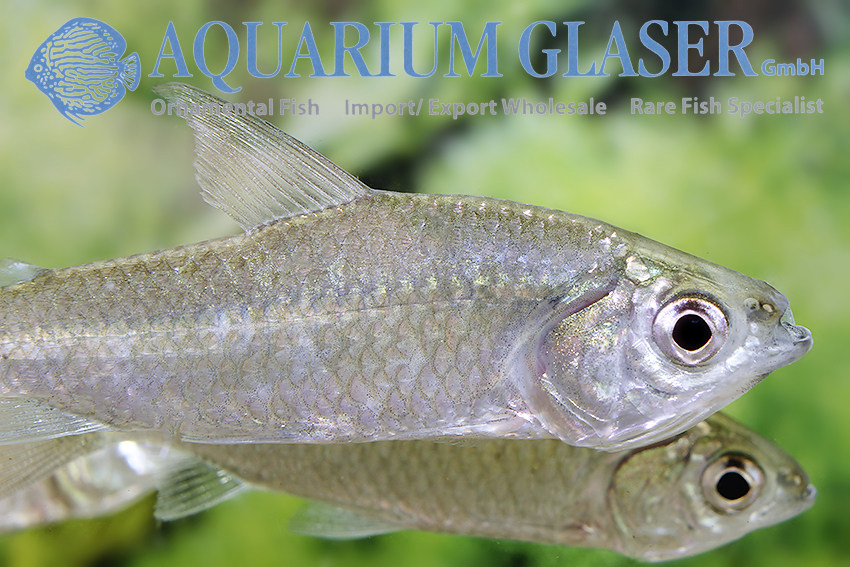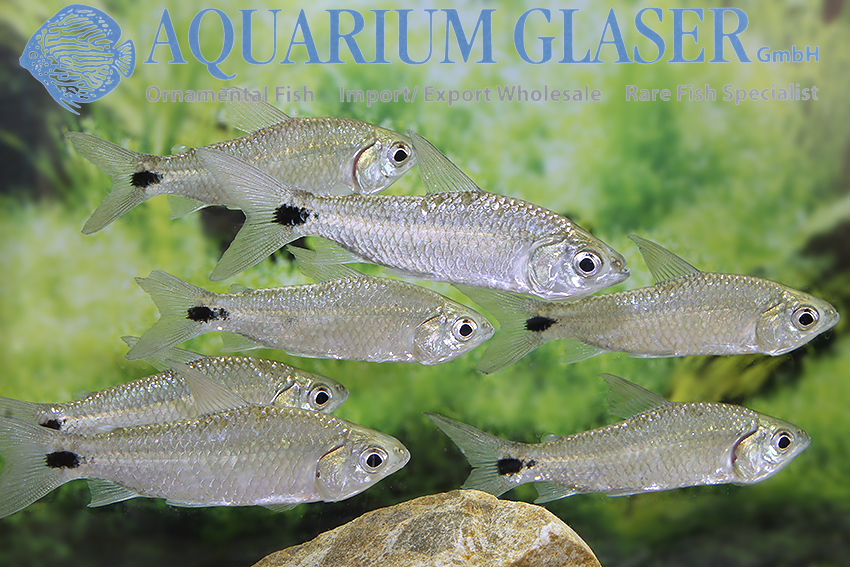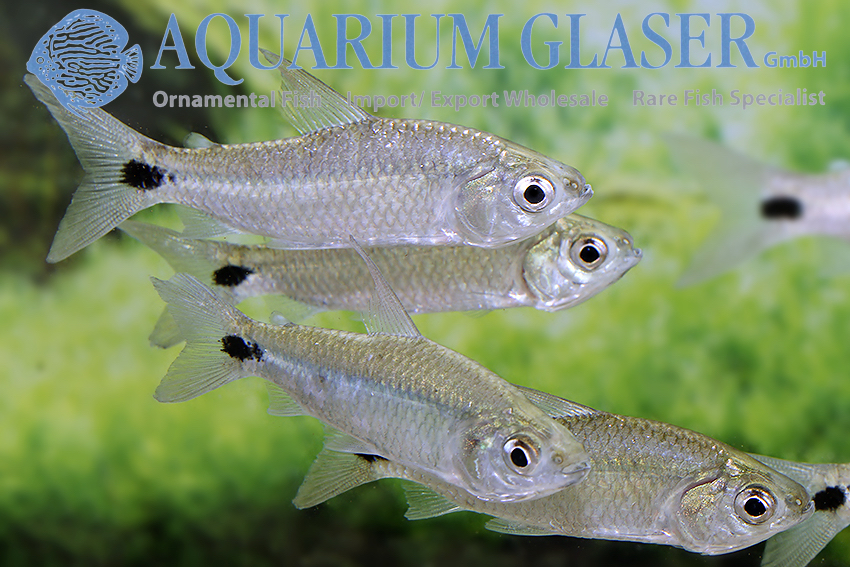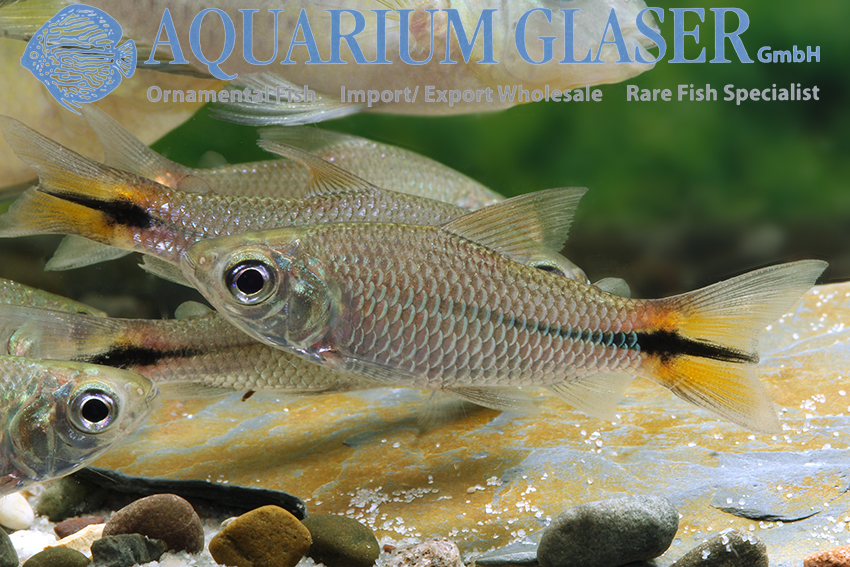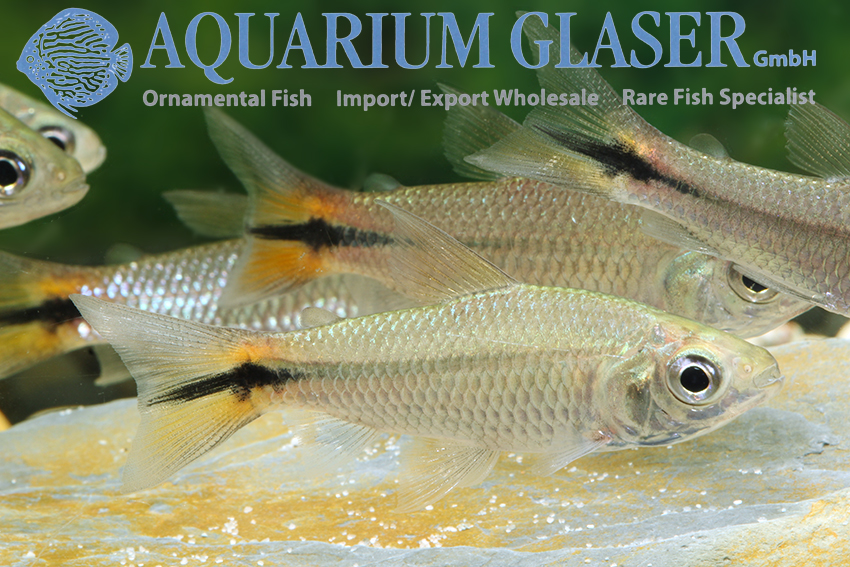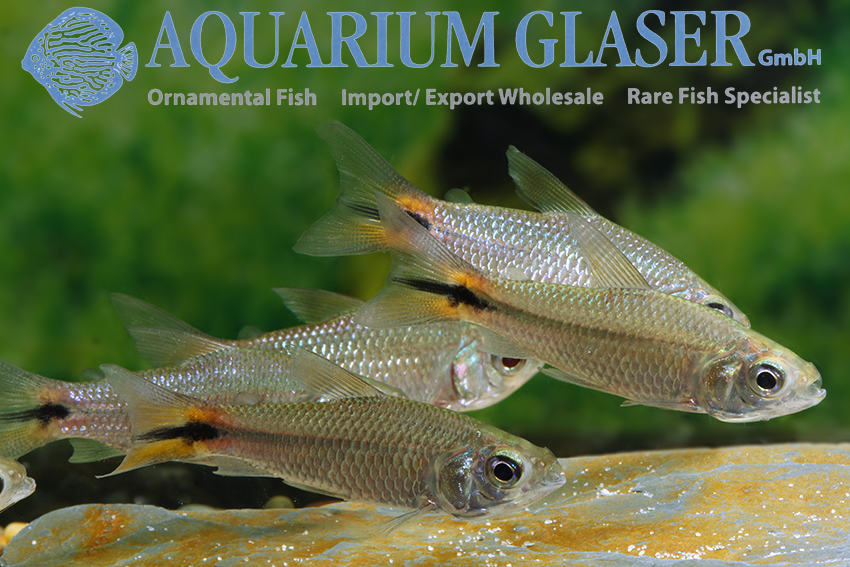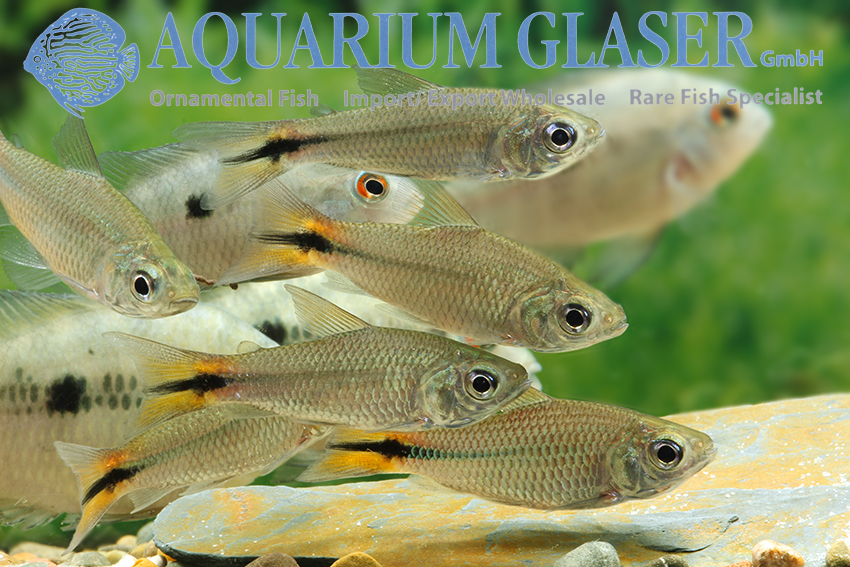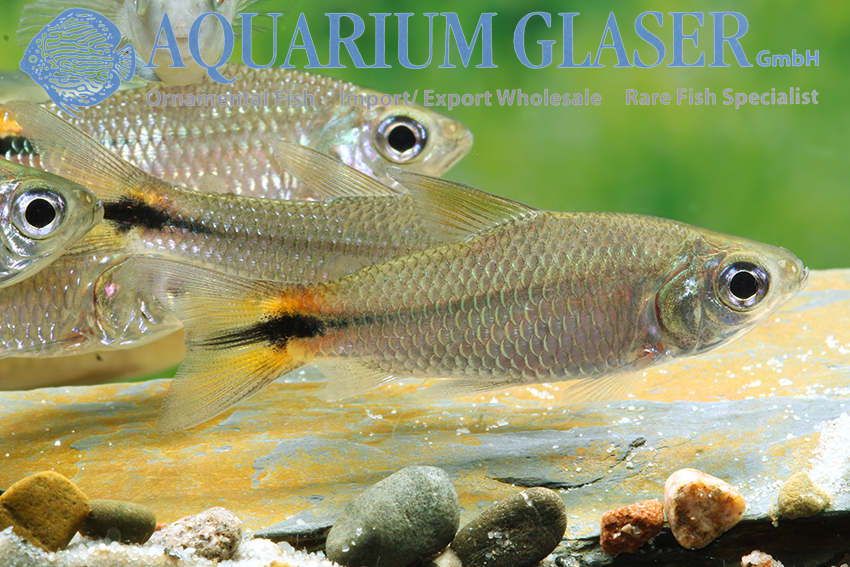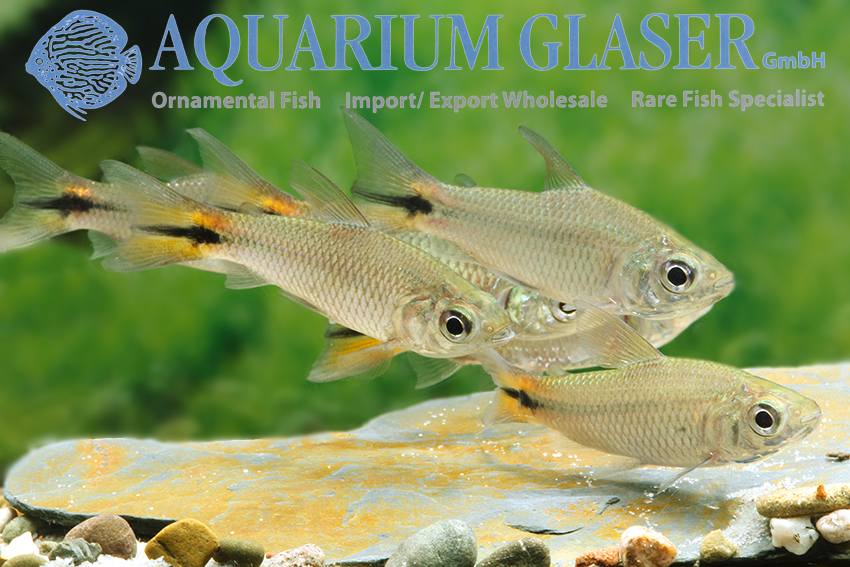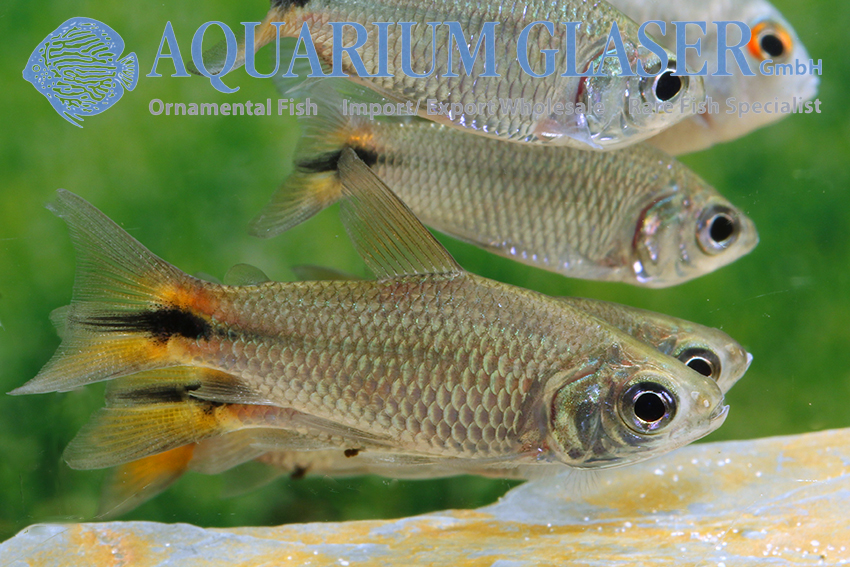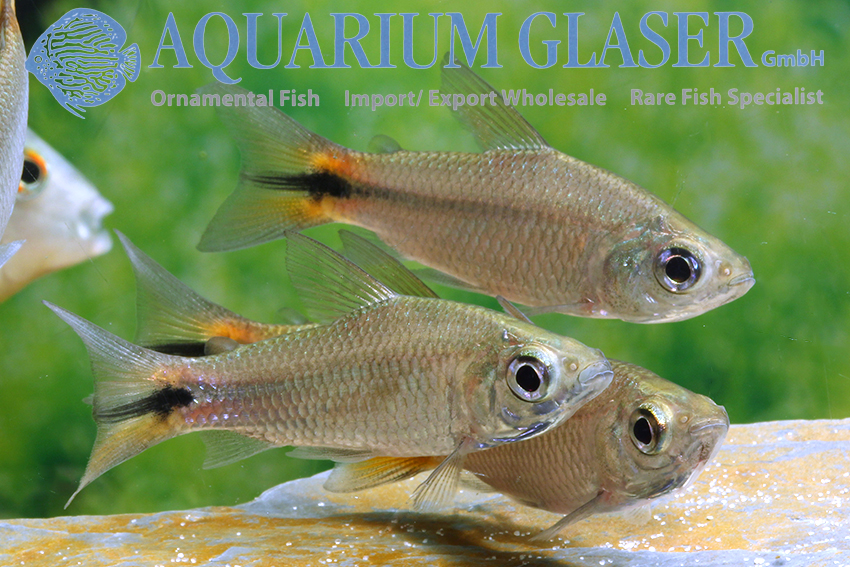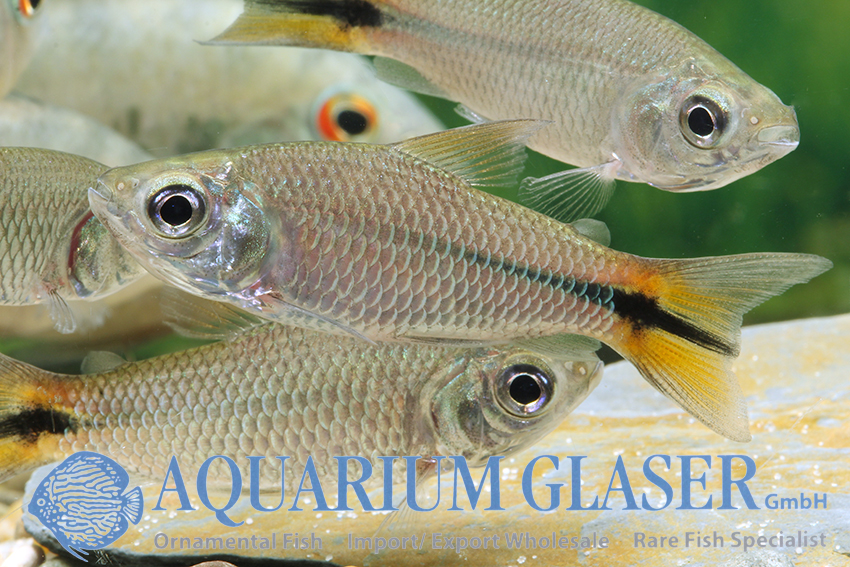The genus Curimatopsis comprised five described species until 2009 – now (2021) there are more than twice as many, namely 11! Curimatopsis can be divided into two major groups. First the C. macrolepis group with 6 species and second the C. evelynae group with 5 species. The best distinguishing feature of the two groups is the mouth position. In the species of the C. macrolepis group the lower jaw is longer than the upper jaw, i.e. it protrudes slightly, in the C. evelynae group both halves of the jaw are of equal length.
We could now import some Curimatopsis from Venezuela, which are C. macrolepis. This attractive little fish has hardly found its way into the aquarium so far.
Curimatopsis macrolepis grows to a maximum length of 6 cm, but at 4 cm it is fully sexually differentiated and colored. The males can be recognized by their clearly higher tail and the quite differently shaped tail spot. This is round or lengthways-oval with females, with the male on the other hand at the end moved out to a stripe, that runs through the entire tail fin. Depending on the social rank within the group, a red tail spot shines with different intensity. Again, only the males have this color characteristic. That means, every animal with a red tail spot is a male, but not every individual without this spot is a female. Socially weak males also do not show the spot or only indistinctly!
Curimatopsis macrolepis is a very peaceful fish, which is ideal for a community aquarium. It is most beautiful in a water colored slightly yellow by peat or leaves, then sometimes a neon green stripe shines along the body flank.
The mouth of Curimatopsis is toothless, a peculiarity among the tetras; accordingly, they are to be fed with soft foods, in nature they eat mainly detritus, that is, the “mulm” consisting of rotting plants and microorganisms. Live plants are not on the menu. Artemia nauplii, adult Artemia, cyclops and flake food are the optimal diet for the fish in the aquarium.
For our customers: the species has the code number 251333. Please note that we only supply wholesale.
Text & Photos: Frank Schäfer





